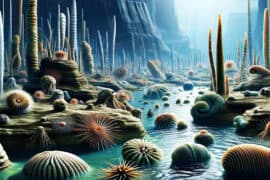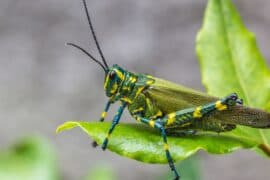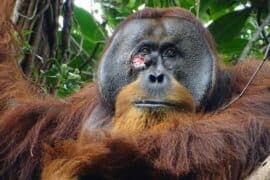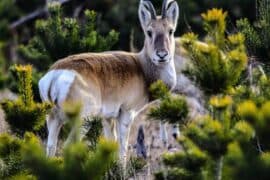Pyjama shark
(Poroderma africanum)
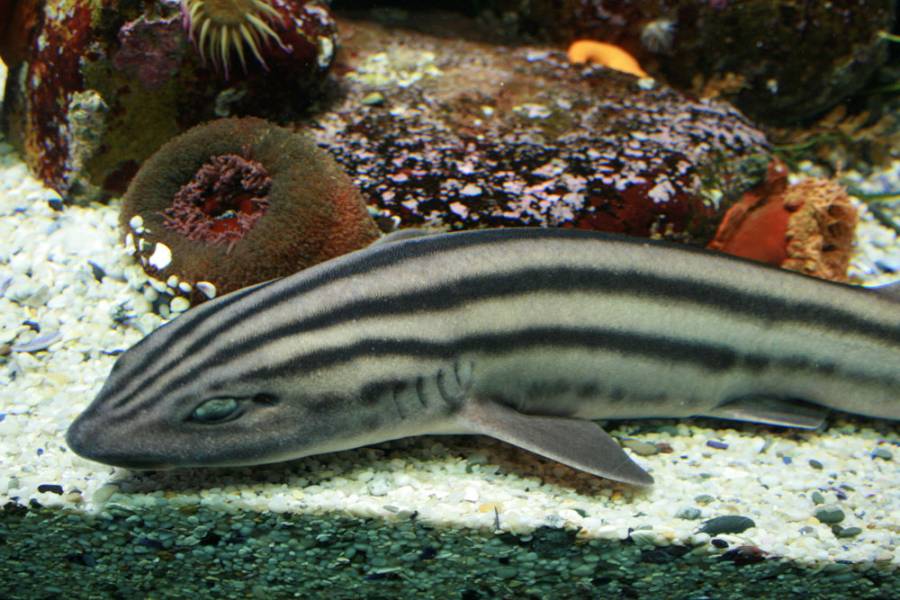
Description
The pyjama shark or striped catshark (Poroderma africanum) is a species of catshark,and part of the family Scyliorhinidae,endemic to the coastal waters of South Africa.This abundant,bottom-dwelling species can be found from the intertidal zone to a depth of around 100 m (330 ft),particularly over rocky reefs and kelp beds.With a series of thick,parallel,dark stripes running along its stout body,the pyjama shark has an unmistakable appearance.It is additionally characterized by a short head and snout with a pair of slender barbels that do not reach the mouth,and two dorsal fins that are placed far back on the body.It can grow up to a length of 1.1 m (3.6 ft) long.The pyjama shark is primarily nocturnal,spending most of the day lying motionless and hidden in a cave or crevice or among vegetation.It often forms groups,particularly during summer.This species is an opportunistic predator that feeds on a wide variety of fishes and invertebrates;it favors cephalopods and frequents the spawning grounds of the chokka squid (Loligo reynaudi).When threatened,it curls into a circle with its tail covering its head.Reproduction is oviparous,with females laying rectangular,dark brown egg cases two at a time year-round.This small and harmless shark adapts well to captivity and is commonly displayed in public aquariums.It is often caught as a bycatch of commercial and recreational fisheries.Many are killed by fishers who regard them as pests.Although there are no data suggesting its numbers have declined,the International Union for Conservation of Nature (IUCN) has assessed the pyjama shark as Near Threatened because of expanding small shark fishery activities within its limited range.The pyjama shark is the larger and thicker-bodied of the two Poroderma species,growing to 1.1 m (3.6 ft) long and 7.9 kg (17 lb) or more in weight.Both sexes grow to roughly the same maximum size.The head and snout are short and slightly flattened,with a narrowly parabolic outline when viewed from above or below.Each nostril is split into tiny incurrent and excurrent openings by a flap of skin in front;the flap has a three-lobed shape with the central lobe forming a long,conical barbel.The barbels are thicker than in the leopard catshark,and do not reach the mouth.The eyes are horizontally oval and placed rather high on the head,with rudimentary nictitating membranes (protective third eyelids) and a thick ridge running underneath.The sizable mouth forms a broad arch,with short furrows extending from the corners onto both the upper and lower jaws;the upper teeth are exposed when the mouth is closed.There are 18–25 and 14–24 tooth rows on either side of the upper and lower jaws,respectively.The teeth have a slender central cusp flanked by a pair of small cusplets;those of adult males are slightly thicker than those of females.The body is fairly compressed from side to side and tapers towards the tail.The two dorsal fins are placed far back: the first originates over the rear of the pelvic fins while the second originates over the midpoint of the anal fin.The first dorsal is much larger than the second.The pectoral fins are large and broad.The pelvic fins are lower than the pectorals but their bases are about equal in length.Adult males have a pair of short,thick claspers,with the inner margins of the pelvic fins partially fused over them to form an "apron".The short and broad caudal fin has an indistinct lower lobe and a ventral notch near the tip of the upper lobe.The skin is very thick and bears well-calcified dermal denticles;each denticle has an arrowhead-shaped crown with three posterior points,mounted on a short stalk.The dorsal coloration is distinctive,consisting of 5–7 thick,parallel,dark stripes running from the snout to the caudal peduncle on a variably grayish or brownish background;the stripes become broken near the tail and the belly.In some sharks,the main stripe on either side may fork behind the eye,the stripes may be split in two by lighter central lines,or one or more large dark spots may be present.The underside is pale,sometimes with light gray spotting,and clearly demarcated from the flank color.Young sharks resemble the adults,but may be much lighter or have much darker stripes.An albino specimen has been recorded from False Bay.
Taxonomic tree:


